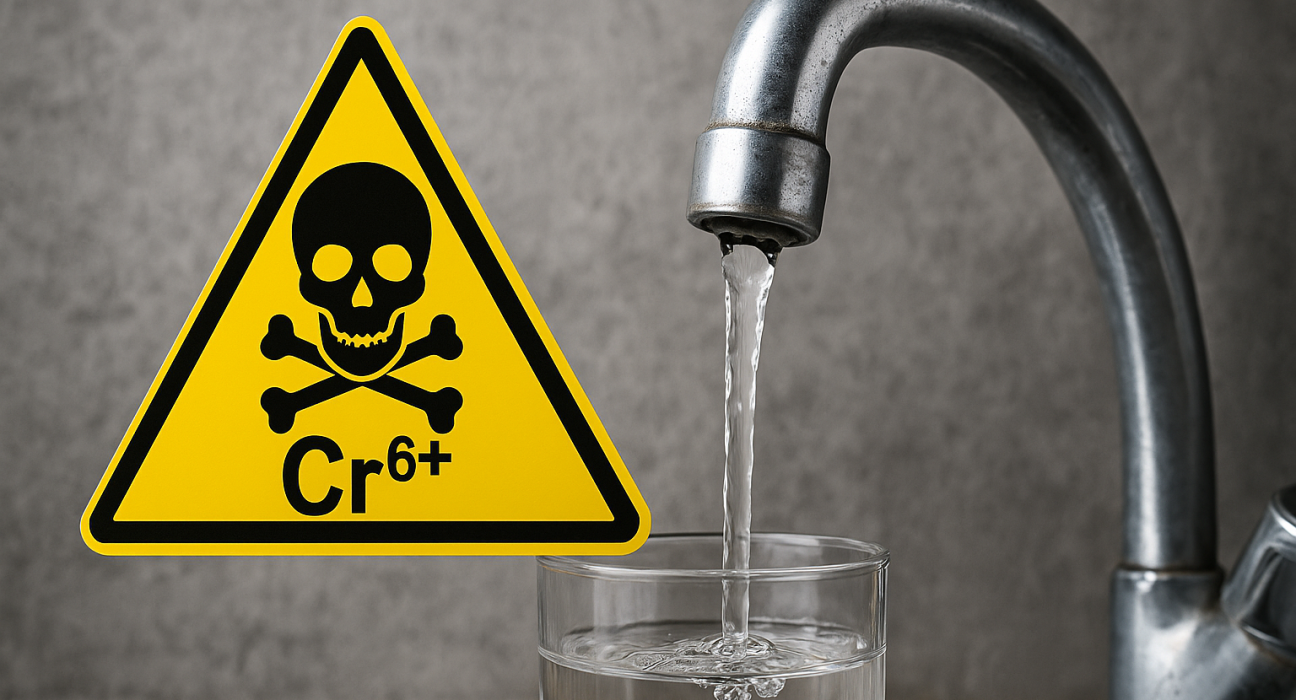As of July 2025, California legislators are considering Senate Bill 466, aimed at giving water utilities legal immunity from lawsuits during the period they work toward compliance with the state’s newly enacted hexavalent chromium‑6 drinking water standard CalMatters. Chromium‑6, the carcinogenic chemical highlighted in the Erin Brockovich–inspired Hinkley water contamination case, has prompted California to adopt the nation’s first regulatory limit, set at 10 parts per billion (ppb)—a threshold enforced even as utilities struggle to meet it.
More than 300 water systems across California, including communities in the Central Valley, Inland Empire, and coastal regions, report detectable levels of chromium‑6 in groundwater. These include counties such as Riverside, Los Angeles, Monterey, Santa Cruz, Solano, Merced, and San Bernardino.
Groundwater providers have raised concerns that immediate enforcement of the standard would force them to incre. The risks of failing to meet legal thresholds, including costly lawsuits or mandatory notifications to consumers, could further burden already strained budgets.
SB 466 proposes offering temporary legal protection for water districts while they upgrade systems, without weakening state regulators’ enforcement authority. Proponents argue this measure prevents lawsuits during compliance transitions and reduces ratepayer expense CalMatters.
Key Points
- New legal protection: SB 466 would shield water providers from lawsuits as they work to bring chromium‑6 levels within the 10 ppb standard.
- Health-driven standard: California’s regulation is the first focused solely on chromium‑6, aiming to reduce long-term cancer and kidney disease risks thewestsideexpress.com.
- Widespread contamination: Over 300 systems statewide report chromium‑6 detections, with some areas requiring expensive upgrades KAASS LAW.
- Economic stress: Compliance costs could result in steep water bill hikes, disproportionately affecting low-income communities Wikipedia.
- Balanced compromise: Bill supporters frame SB 466 as a way to ease transition without undermining enforcement.
Future Projections
Regulatory & Legislative Effects
If passed, SB 466 may serve as a national model balancing public health priorities with economic feasibility—particularly in states facing infrastructure gaps. It might encourage similar legislative frameworks elsewhere.
Health Outcomes & Social Equity
Once implemented, the chromium‑6 standard could prevent environmental exposure-related illnesses for millions. However, its long-term benefits hinge on timely upgrades and accessible financing—particularly in underserved communities.
Financial & Utility Management
Utilities will likely seek state aid or low-interest financing to mitigate large upfront capital expenditures. Absent adequate support, ratepayer budgets—especially in small systems—may strain.
Political & Legal Oversight
SB 466 could attract pushback from environmental justice advocates or legal experts who argue that liability protections weaken accountability. Future legal challenges and public hearings are probable as the bill moves through the legislature.
Public Awareness & Trust
The link to “Erin Brockovich” may heighten public vigilance: consumers are more likely to monitor water quality and expect transparency. Utilities may respond with increased community outreach or expanded public reporting protocols to preserve trust.
Neutral Reflection
This proposed law addresses a core challenge: how to implement rigorous health standards for chromium‑6 contamination while acknowledging real-world constraints faced by water systems. SB 466 offers a compromise—preemptive legal relief in exchange for phased compliance—aiming to protect public health without triggering financial shockwaves. Still, its effectiveness hinges on regulatory clarity, state support, and equitable application. California may set a national precedent in environmental policy if the balance holds.








Leave feedback about this
You must be logged in to post a comment.